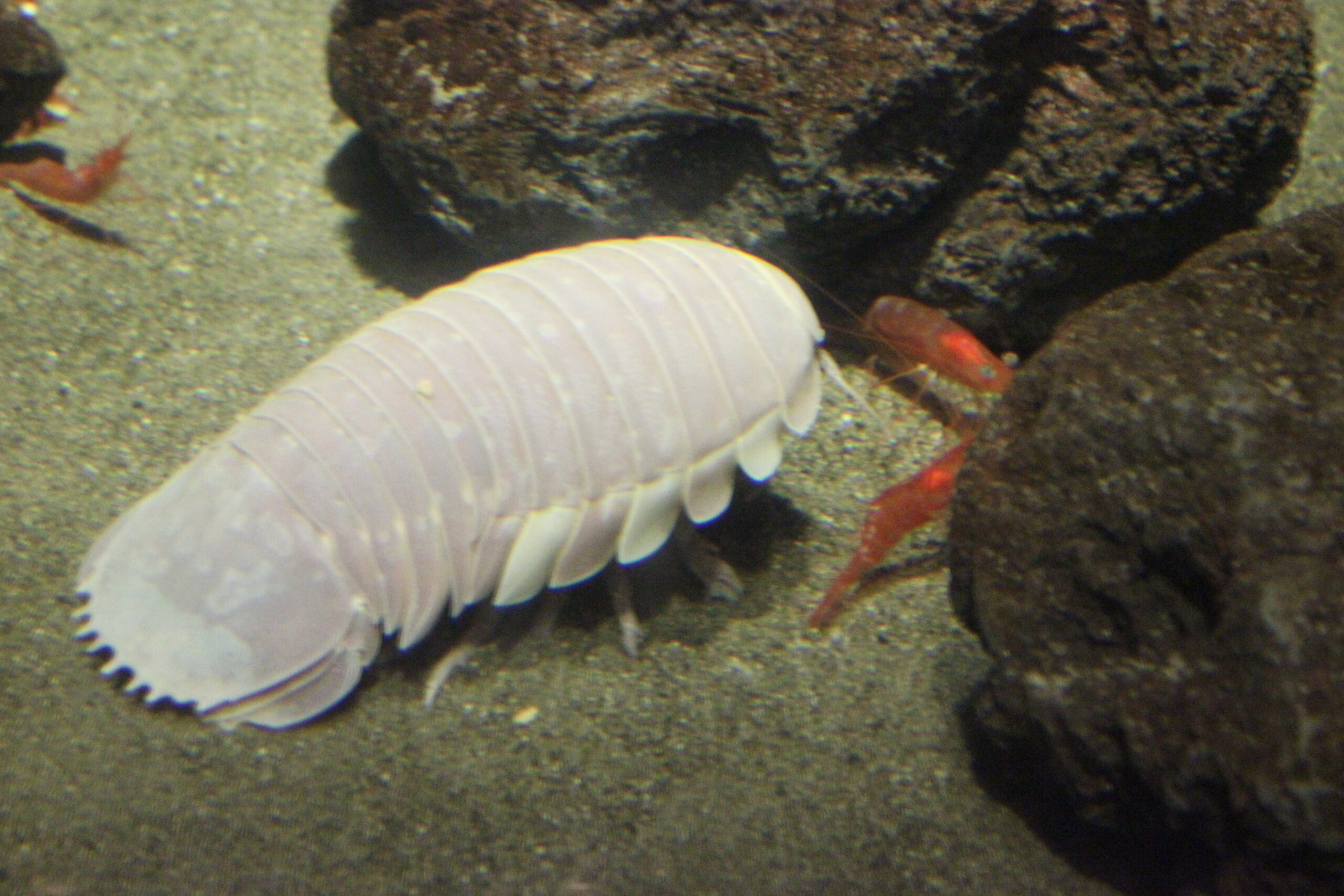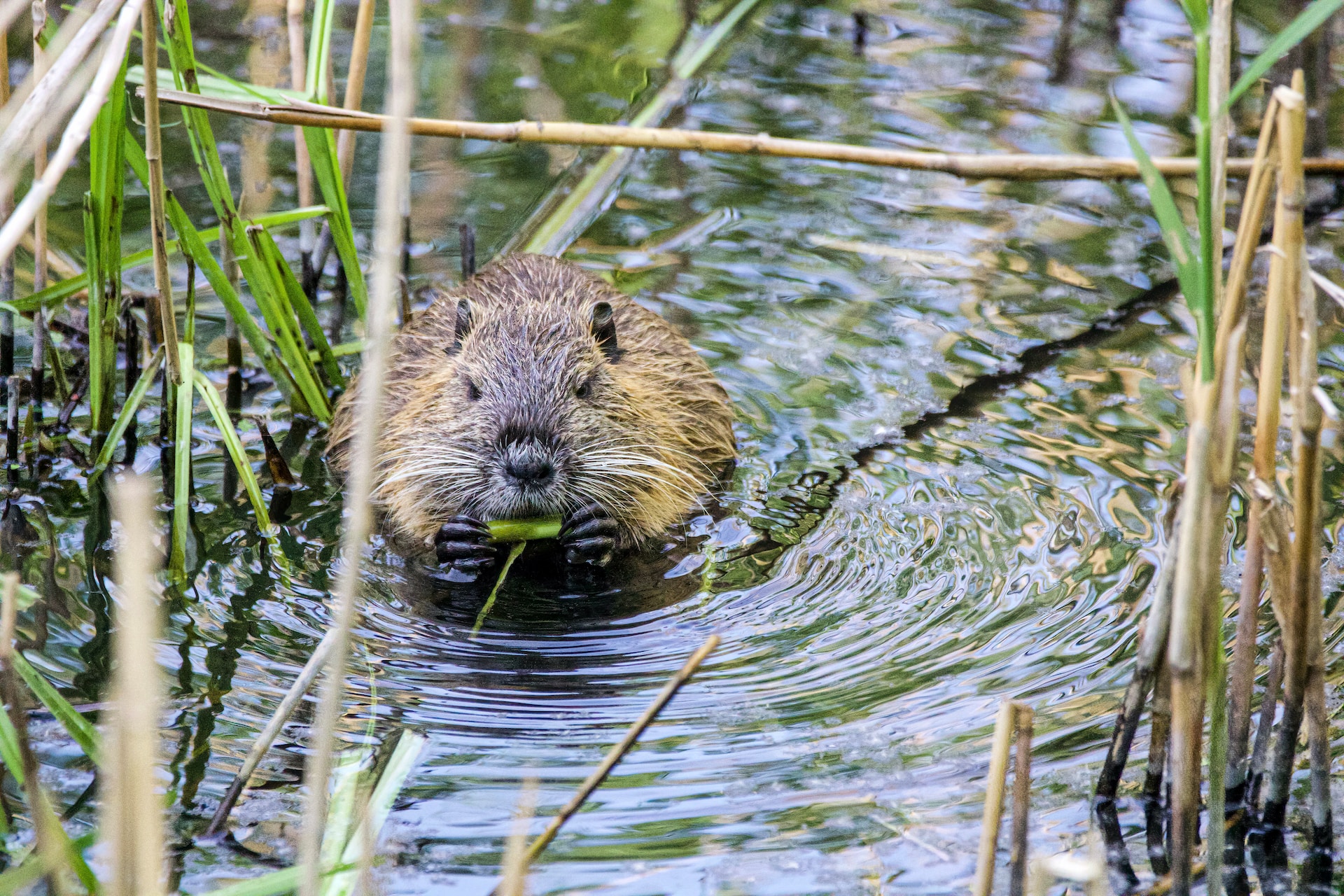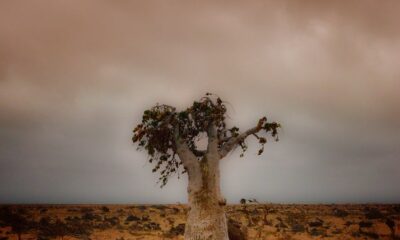Nature and Wildlife
Exploring the Mysteries of Deep-Sea Creatures

Welcome, fellow adventurers, to the breathtaking unknown depths of the mysterious oceans. Today, we will embark on an extraordinary journey to discover the hidden world of deep-sea creatures. Brace yourselves, for what lies beneath the surface will astound and intrigue you.
While the vast majority of our planet is covered in water, only a small fraction of it has been explored. It is in this uncharted territory where some of the most fascinating and bizarre creatures reside. Far from the reach of sunlight, these deep-sea organisms have evolved unique features to adapt to their dark and extreme environment.
One remarkable group of deep-sea creatures is known as bioluminescent organisms. These incredible beings have the ability to produce their own light, illuminating the otherwise pitch-black depths. Their bioluminescence serves various purposes, including attracting prey, communicating with others of their kind, and even camouflage. The intriguing light shows put on by these creatures have captivated scientists and curious minds alike.
One of the most renowned deep-sea creatures is the anglerfish. With its menacing appearance and glowing lure-like appendage, it is a true marvel of nature. The anglerfish, particularly the female, possesses a unique method of reproduction. Once a male finds a female, he latches onto her and fuses his body with hers, becoming a permanent parasite. The male’s organs eventually merge with the female’s, ensuring a constant supply of sperm. It’s an astonishing example of adaptation to the extreme conditions these creatures endure.
Another fascinating group of deep-sea creatures are the cephalopods, such as the giant squid and the mysterious vampire squid. These intelligent beings possess incredible camouflage abilities and can change the color and texture of their skin to blend seamlessly with their surroundings. The giant squid, with its enormous size and legendary battles with sperm whales, has intrigued sailors and captivated imaginations for centuries. Modern technology has allowed us to catch glimpses of these elusive creatures, but there is still much to learn about their behavior and way of life.
The deep-sea is also home to a diverse range of amazing and sometimes terrifying fish species. One such creature is the fangtooth fish. Despite its small size, it has the largest teeth of any fish in relation to its body. These needle-like teeth are adapted for grabbing and impaling prey. Its fearsome appearance serves as a reminder of the fierce competition for survival in the depths.
Exploration of the deep-sea has presented us with countless surprises, including the recent discovery of the “shadow zone.” This remarkable region is several hundred meters below the ocean surface, where sunlight cannot penetrate. Yet, astonishingly, life still thrives in this seemingly inhospitable environment. Organisms in the shadow zone have adapted to rely on the faintest traces of sunlight and organic matter that slowly sinks from above. These adaptations showcase the resilience and resourcefulness of life itself.
As we conclude our journey into the hidden world of deep-sea creatures, we are reminded of the immense wonders that lie beneath the waves. The deep-sea remains a realm of mystery, beckoning us to continue our exploration and unravel its secrets. By venturing into this alien environment, we gain a deeper understanding of the vast diversity and resilience of life on our planet.
So, fellow adventurers, I urge you to embrace curiosity, seek knowledge, and marvel at the wonders of the deep-sea. Let the hidden world of deep-sea creatures inspire us to protect and preserve the fragile ecosystems that support life in even the most extreme environments. Together, we can ensure that these captivating creatures continue to thrive amidst the challenges they face. Happy exploring, and until our next adventure, stay curious and prepared for anything that lies ahead.
Note: The article provided is a creative work based on the description given. It is intended for entertainment purposes and should not be considered as factual information.

Nature and Wildlife
Extreme Living: Wildlife Survival in the Himalayas

The Himalayas, spanning across five countries, are home to a diverse range of wildlife that have adapted to the region’s high altitude, harsh climate, and rugged terrain. In this article, we will explore some of the remarkable species that thrive in the Himalayas and the adaptations that have allowed them to survive and flourish in this extreme habitat.
The snow leopard, one of the most iconic species found in the Himalayas, is perfectly adapted to life at high altitudes. Its thick fur provides insulation against the cold, and its large paws act as natural snowshoes. Snow leopards are expert climbers, with powerful limbs and a long, flexible tail that aids in balance. Their exceptional camouflage allows them to blend seamlessly into their rocky surroundings, making them incredibly difficult to spot. Snow leopards are primarily found at altitudes of 9,800 to 17,000 feet and are known to inhabit areas with steep cliffs and rocky outcrops, which provide them with excellent vantage points for hunting their prey.
Another remarkable species found in the Himalayas is the Himalayan tahr, a large ungulate closely related to the wild goat. The tahr is well-suited to life at high elevations, with its sturdy legs and cloven hooves providing excellent grip on the steep, rocky terrain. Their dense, woolly fur provides insulation against the cold, and their impressive agility allows them to navigate the treacherous slopes with ease. Himalayan tahrs are typically found at elevations of 8,200 to 16,400 feet and are known to inhabit steep, rocky cliffs and grassy slopes.
The endangered red panda, a small arboreal mammal found in the temperate forests of the region, is another remarkable species found in the Himalayas. Red pandas are expert climbers, with sharp claws and a long, bushy tail that aids in balance. Their thick fur provides insulation against the cold, and their unique ability to rotate their ankles allows them to descend trees headfirst. Red pandas are primarily found at altitudes of 7,200 to 15,700 feet and are known to inhabit areas with dense bamboo growth, which makes up the majority of their diet.
In addition to these larger species, the Himalayas are home to a diverse array of smaller mammals, birds, and reptiles. The Himalayan marmot, a large ground-dwelling squirrel found at elevations of 11,500 to 18,000 feet, is one such species. These social animals live in colonies and have adapted to the harsh climate by hibernating during the winter months. The Himalayas are also home to over 500 species of birds, including the Himalayan monal, a brightly colored pheasant that is the national bird of Nepal. These birds are found at elevations of 8,200 to 15,100 feet and are known for their impressive courtship displays.
The Himalayas are a treasure trove of biodiversity, with countless species that have evolved unique adaptations to survive in this harsh environment. As climate change and human activity continue to impact these fragile ecosystems, it is crucial that we work to protect and preserve these incredible creatures and their habitats for future generations. By raising awareness of the unique wildlife found in the Himalayas and the challenges they face, we can help to ensure the continued survival of these remarkable species.
Nature and Wildlife
Exploring the Intricate Interdependence Between Species

Out here in the wild, the relationships between different species aren’t just fascinating; they’re essential. It’s a dance of survival, a delicate balance that keeps the natural world humming along. This interconnectedness, this mutual dependence, is what we call symbiosis.
Now, the term symbiosis might sound like some highfalutin scientific jargon, but it’s not as complicated as it seems. Simply put, it’s a close and long-term interaction between two different species. And boy, does it make for some interesting dynamics.
Take the African oxpecker and the Cape buffalo, for instance. The oxpecker, a small bird with an appetite for ticks and other parasites, finds a veritable buffet on the buffalo’s back. In return, the buffalo gets a free grooming service. This mutual benefit is what we call mutualistic symbiosis.
But it’s not always a two-way street of benefits. Sometimes, one species benefits at the expense of another. This is what we call parasitic symbiosis. A good example is the relationship between a tick and a human. The tick feeds on the human’s blood for survival and growth, while the human, well, gets a nasty bite and maybe a disease or two.
Then there’s commensalistic symbiosis, where one species benefits and the other is neither harmed nor benefited. Picture barnacles attaching themselves to a whale’s skin. The barnacles get a free ride and plenty of food as the whale travels, while the whale doesn’t seem to mind their presence.
These symbiotic relationships are more than just interesting trivia; they’re a testament to nature’s ingenuity and resilience. They’re a lesson in adaptation and survival, a lesson that we humans can learn a lot from.
Let’s look closer at the honeybee and the flower, a classic example of mutualistic symbiosis. The honeybee collects nectar from the flower, getting the food it needs. In the process, it transfers pollen from one flower to another, aiding in the flower’s reproduction. It’s a win-win situation, but more than that, it’s a testament to how survival often depends on cooperation and mutual benefit.
Now, you might be wondering, what’s all this got to do with survival in the wild? Well, understanding symbiosis can give us a deeper appreciation of nature’s balance and how each creature, no matter how small, has a role to play. It reminds us that we’re part of a larger ecosystem, and our survival depends on its health and stability.
Moreover, it can guide us in our survival strategies. Just like the oxpecker and the buffalo, we can form alliances and partnerships that enhance our survival. For instance, we can learn to identify and use plants that repel harmful insects or attract beneficial ones. We can understand how certain animals can signal the presence of water or warn us of predators.
In essence, the principle of symbiosis is a powerful tool in our survival toolkit. It teaches us to see the interconnectedness of all life, to respect the balance of nature, and to harness these relationships for our survival and well-being.
So, next time you’re out in the wild, take a moment to observe the intricate dance of symbiosis. Watch the birds and the bees, the flowers and the trees, and remember that we’re all in this together. And in this grand dance of survival, every step, every interaction, every relationship matters.
Remember, it’s not just about surviving; it’s about thriving. And understanding symbiosis, understanding our place in the ecosystem, is a big part of that. So, keep exploring, keep learning, and keep surviving. Because out here in the wild, knowledge is more than power; it’s survival.
Nature and Wildlife
The Role of Beavers in Shaping Our Freshwater Ecosystems

As Jack Morgan, I’ve spent countless hours in the great outdoors, observing and interacting with the natural world in ways most people can only dream of. During my explorations, I’ve come across one creature that never fails to impress me with its industrious nature and significant impact on our freshwater ecosystems – the beaver.
Nature’s architects
Beavers, often overlooked, are nature’s architects. With their sharp teeth and strong jaws, they fell trees and build dams, creating ponds and wetlands. This might seem like simple animal behavior, but the role of beavers in shaping our freshwater ecosystems is far more profound than you might think.
First and foremost, beaver dams create a habitat for a plethora of wildlife. The ponds and wetlands that result from their hard work provide a home for fish, birds, insects, and various mammals. By creating these habitats, beavers increase biodiversity, which is crucial for a healthy ecosystem. It’s a ripple effect; the more diverse an ecosystem is, the more resilient it becomes to changes and disturbances.
Water management
Furthermore, these dams play a critical role in water management. They slow down the flow of water, reducing the risk of floods downstream during heavy rains. The water in beaver ponds is stored and then slowly released, which can also help maintain water levels during dry periods. This function is not only beneficial for the wildlife that depends on these water sources but also for us humans who often live downstream.
Beaver dams also act as natural filters. As water passes through the dam, it leaves behind sediment and pollutants. This process improves water quality by trapping harmful substances, which can have a significant impact on the health of downstream ecosystems.
Moreover, the role of beavers extends to combating climate change. Wetlands are known as carbon sinks, meaning they absorb more carbon than they release. By creating and maintaining wetlands, beavers help in sequestering carbon, thus contributing to the mitigation of climate change.
It’s important to note, however, that beavers are not always seen in a positive light. Their tree felling and dam building can sometimes conflict with human activities. For instance, they can flood agricultural lands or roads, and their taste for certain trees can be problematic in managed forests. But these conflicts offer opportunities for us to adapt and innovate, to find ways to coexist with these industrious creatures.
Understanding and appreciating the role of beavers in our freshwater ecosystems is crucial. These animals contribute significantly to the health and resilience of these ecosystems. The ponds and wetlands they create increase biodiversity, manage water flow, improve water quality, and help combat climate change.
So, next time you come across a beaver dam, take a moment to appreciate the profound impact these creatures have on our environment. Remember, survival isn’t just about adapting to nature; it’s about understanding and respecting it. And in the grand scheme of things, we could learn a lot from the humble beaver. Their instinct to shape their environment for the better, to work hard for the benefit of their community, is a lesson we could all do well to remember.
As we journey through the wild terrains of our world, let’s not forget to acknowledge and appreciate the role each creature plays in the intricate web of life. From the industrious beaver to the tiniest insect, each has a part to play, each contributes to the balance of our ecosystems. The survival and resilience of our planet depend on this balance, and it’s our responsibility to protect and preserve it.
-

 Tactical1 year ago
Tactical1 year ago70-Year-Old Fends Off Intruder with Lead-Powered Message
-

 Tactical1 year ago
Tactical1 year agoVape Shop Employee Confronts Armed Crooks, Sends Them Running
-

 Preparedness11 months ago
Preparedness11 months agoEx-Ballerina’s Guilty Verdict Sends Tremors Through Gun-Owner Community
-

 Preparedness10 months ago
Preparedness10 months agoGood Samaritan Saves Trooper in Harrowing Interstate Confrontation
-

 Tactical1 year ago
Tactical1 year agoMidnight SUV Theft Interrupted by Armed Homeowner’s Retaliation
-

 Survival Stories2 years ago
Survival Stories2 years agoEmily’s 30-Day Experience of Being Stranded on a Desert Island
-

 Preparedness10 months ago
Preparedness10 months agoArizona Engineer’s Headless Body Found in Desert: Friend Charged
-

 Preparedness10 months ago
Preparedness10 months agoBoy Saves Dad from Bear Attack with One Perfect Shot